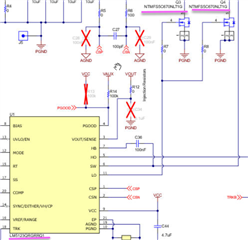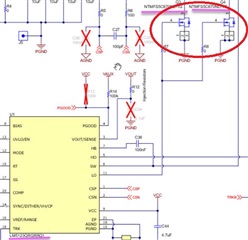Other Parts Discussed in Thread: LM5122
Hello,
As a part of a power charging board I'm designing now I need a boost controller for up-converting batteries voltage while they are discharged.
Till now I considered working with LM5123-Q1. Since it is supposed to be able to transfer 150W I was very worried regard the efficiency and therefore I have I have received from TI its excel calculator for efficiency.
I have already chosen all the peripheral components related to it (FETs and Inductor..) and calculated the efficiency which seems ok (around 97.6%) and suddenly I encountered the LM5122 which seems to be very similar except for the package and some other things which are not so important for me in my design (for example I have enough room for the bigger size of the LM5122) but it does have a better thermal resistance which is an important issue in my design.
1. Is it OK to use the same excel efficiency calculator of TI called "LM5123 BOOST Controller Design Tool" also for LM5122 ?
2. If answer for question 1 is NO than, is there an excel calculator tool for LM5122 that you can provide me ?
3. Can you advice in general what boost controller has a better efficiency using same external peripheral components ?
Thanks and BR,
Ohad



